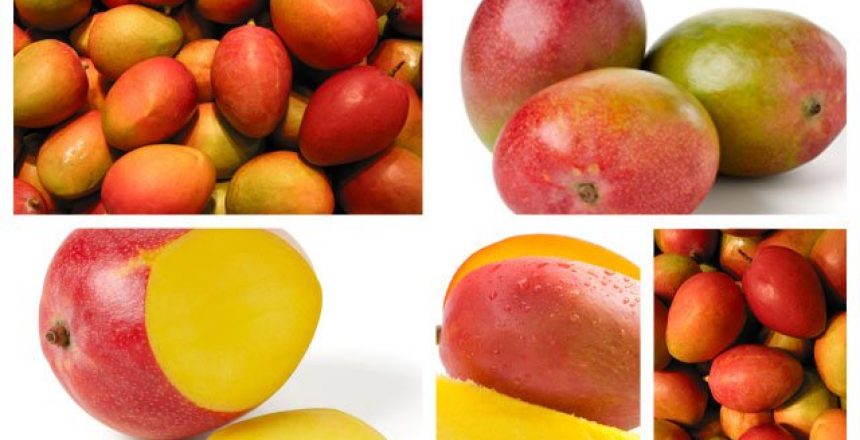Mangos are very perishable products that require precise management through the post harvest handling and cold supply chain to ensure a high value. Being classified as “Climacteric” fruit, they are very sensitive to the presence of ethylene in the storage environment, and should be managed accordingly. This means that careful handling and attention to detail will ensure that quality maximum value is achieved at the point of sale.
The fruit should be picked at what is termed the “mature-green” stage (See “The Cultivation of Mango”, published by ARC-ITSC). This picking stage ensures that the physiological maturity is such that there is time for the subsequent handling and transport of the fruit to market whilst allowing for the mango to ripen into an attractive and tasty fruit. Post picking it is important to wash the fruit upon arrival in the pack house. Then fungicide (Prochloraz) must be applied, either as a spray or drip treatment, to control both Anthracnose and brown soft rot. Obviously over ripe and damaged fruit should be removed at this stage.
The major tool in managing this perishability is the cold chain. The challenge with Mango is the fact that chilling damage to the fruit tissues occurs at a relatively high (<8˚C) temperatures which do not slow down the respiration rate as much as lower temperatures would. Lower temperatures slow down the respiration rate of the fruit and thus help delay the onset of the climacteric ripening process. This is characterised by a preceding surge in the natural production of ethylene. Once this gas is introduced into the storage environment it stimulates the spontaneous ripening in fruit that have not reached the climacteric rise in respiration rate. This then creates the production of additional amounts of ethylene by other fruits. Thus an auto-catalytic spiral is started and unless this is controlled the fruit will all be over-ripe by the time they reach market. It is thus very important the product should be pre-cooled to the correct set point (8˚C for ripe fruit or 11˚C for mature green fruit) as soon as possible after harvest.
Additionally the relative humidity of the storage air throughout the cold chain should be maintained between 90 and 95%. Once the fruit has been cooled to the desired set point they should be kept at that temperature for the remainder of their post harvest life up until the point of sale.
Any unseen injury to the fruit and below the surface fungal infection will spontaneously cause the production of ethylene. As explained, this ethylene accelerate the ripening within that particular fruit as well as additionally stimulating the ripening in fruits that had not yet reached that stage of physiological maturity. It makes sense then to try and reduce the production of further ethylene. The best way to achieve this, over and above managing the temperatures and disease control, is to manage the ethylene levels around the fruit. This can be achieved by a chemical process called “scrubbing ”. This process occurs spontaneously when air containing ethylene is passed over chemicals that adsorb the ethylene onto them. Thus the ethylene is removed from the storage air and is unable to stimulate the production of additional ethylene from pre-climacteric fruit by pushing them into the climacteric phase of respiration and thus ripening. Making use of ethylene scrubbers in the cold stores and shipping containers used to store and transport mangos will remove any ethylene that is in the storage air and the negative impact that this has on fruit quality. In addition the scrubbers by removing other volatile gases especially acetylaldehyde will remove the trigger signal required for fungal spores circulating in the storage air to germinate and grow should there be any suitably injured fruit.
The benefit of this process of ethylene removal is that the ripening rate of the fruit will be slowed down and the likelihood of fungal infection removed. The result will be mangos in the market place that look great are uniformly ripe and taste good.
Ethylene scrubbing technology has existed for many years but recent developments by one of world’s leading companies in this field, namely Bioconservacion, has greatly enhanced the efficacy of the ethylene scrubbing process whilst still offering a cost effective organically acceptable product that is very easy to handle .
A small investment in the ethylene scrubbing technology in your post harvest handling will add to the value of your investment as the fruit quality will be at its best on arrival at the market .
For more information please contact
Dax Rowlands
Samadis (Pty) Ltd
Tel: 082 794 5772
Email: [email protected]
